This cabinet card was photographed by George Rockwood (1882-1911) whose studio was located at 17 Union Square West in New York City. The reverse of the card identifies the subject of this portrait as Maud Harrison (c1856-1907). I have verified that this is indeed Maud Harrison. The corseted Miss Harrison is attractive and wearing a hat, a flower in her hair, and a cross. She is also wearing what appears to be wrist bands. The purpose of these bands beyond fashion, is unknown. Maud Harrison began her career at the Madison Square Theater. The IBDb reports that she appeared in five Broadway plays between 1877 and 1900. These productions include “Pink Dominos” (1877), “French Flats” (1880), and “Naughty Anthony” (1900).The New York Times reports Harrison’s death in 1907. She was found unconscious by a maid in her New York City hotel room. She died shortly after being discovered. Her cause of death was determined to be “Paralytic Stroke”. She had stopped acting in 1902 to care for her sick mother. She was in New York attempting to find a theatrical role to restart her career. For some reason, the Times reports that Miss Harrison was a Christian Scientist. This cabinet card’s photographer, George Rockwood was born in Troy, New York. He graduated from college with a PhD; reportedly either from the University of Chicago, or Columbia University. At 21 years of age, he was a newspaper reporter for the Troy Daily Times and at age 23, he was managing editor of the Troy Daily Post. He began working as a photographer in St. Louis and in 1857 opened a studio with his brother Elihu in New York City. He is credited for bringing CDV’s to America. His obituary in the Washington Post reports that Rockwood photographed more than 350,00 people. This cabinet card has foxing above Miss Harrison’s bust. The photograph is in overall good condition (see scans).
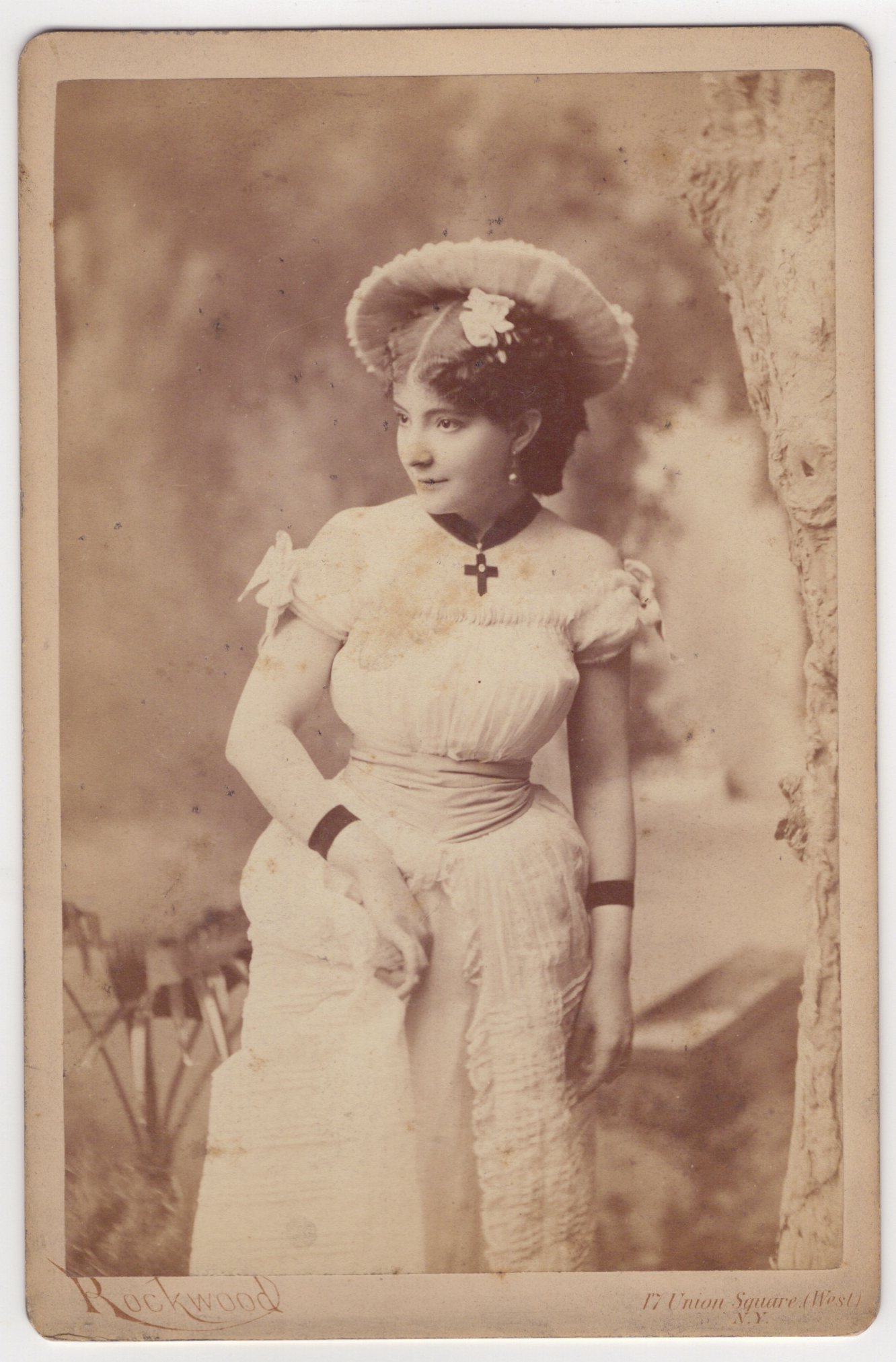
Buy this Cabinet Card Photograph (includes shipping within the US) #6927
To purchase this item, click on the Pay with PayPal button below
$42.00
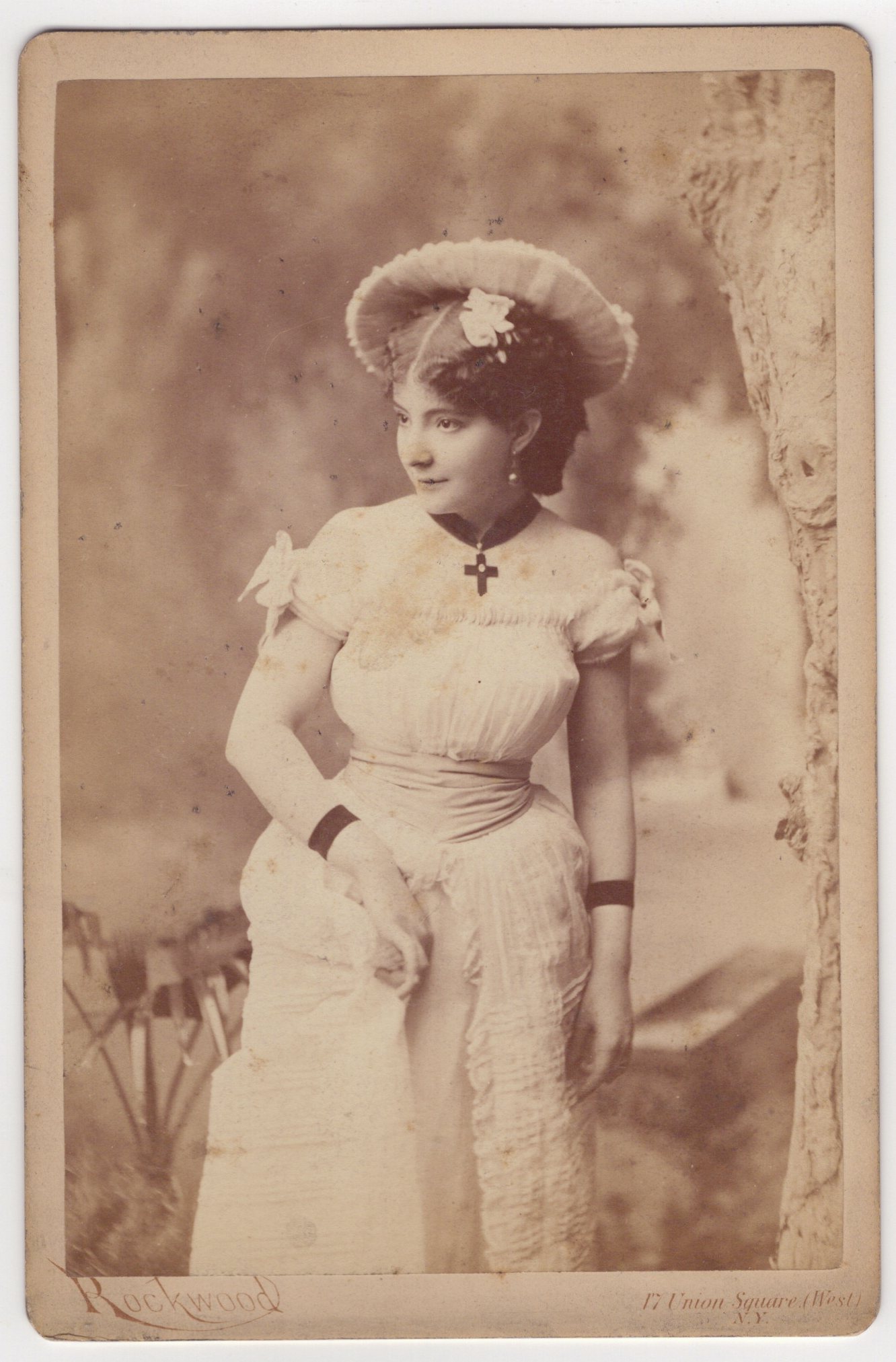
Buy this Vintage Original Cabinet Card (includes International shipping outside the US) #6927
To purchase this item, click on the Pay with PayPal button below
$52.00
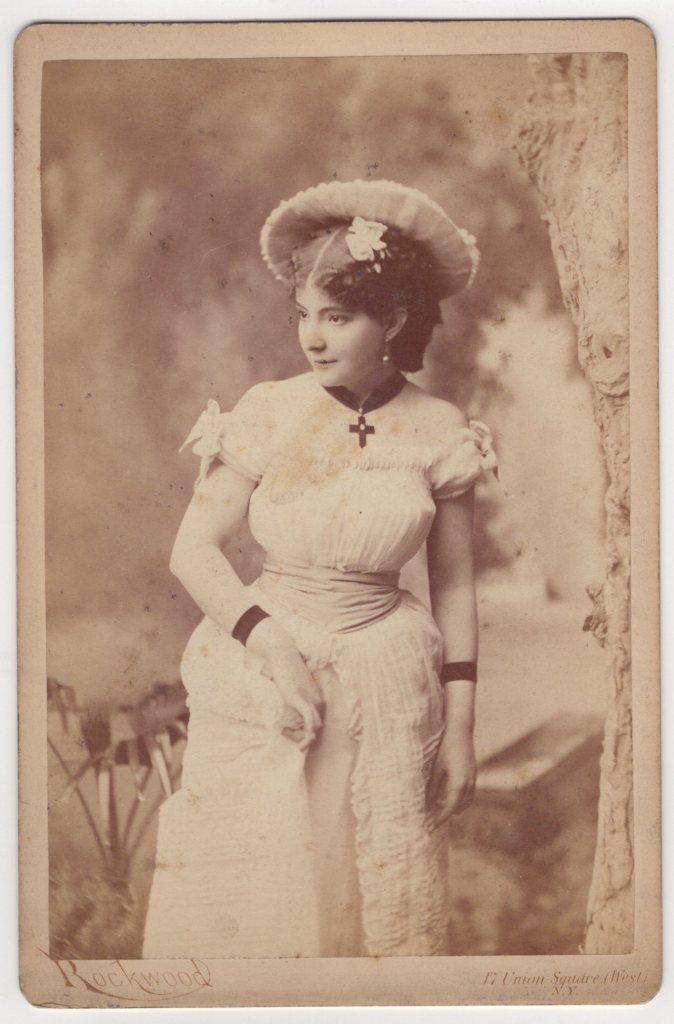
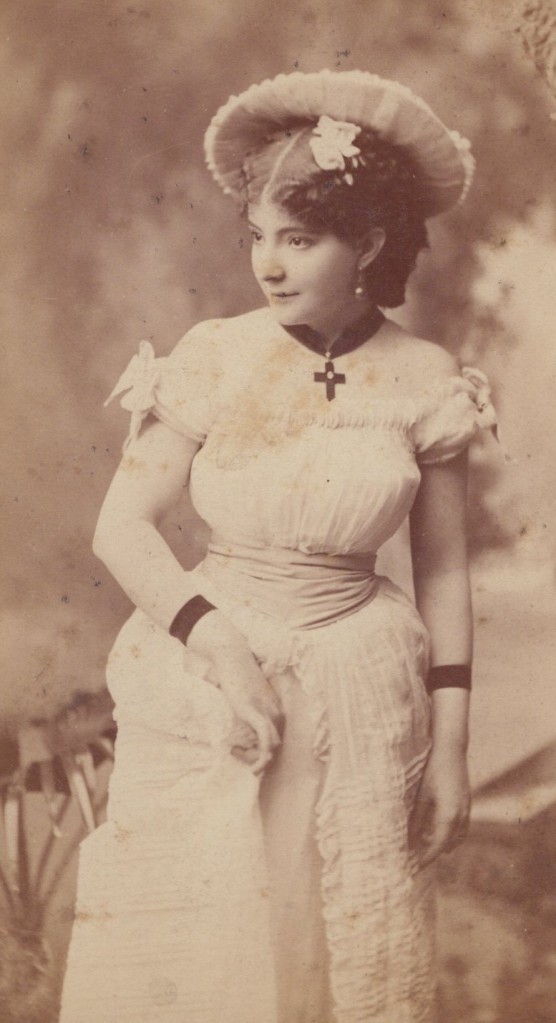
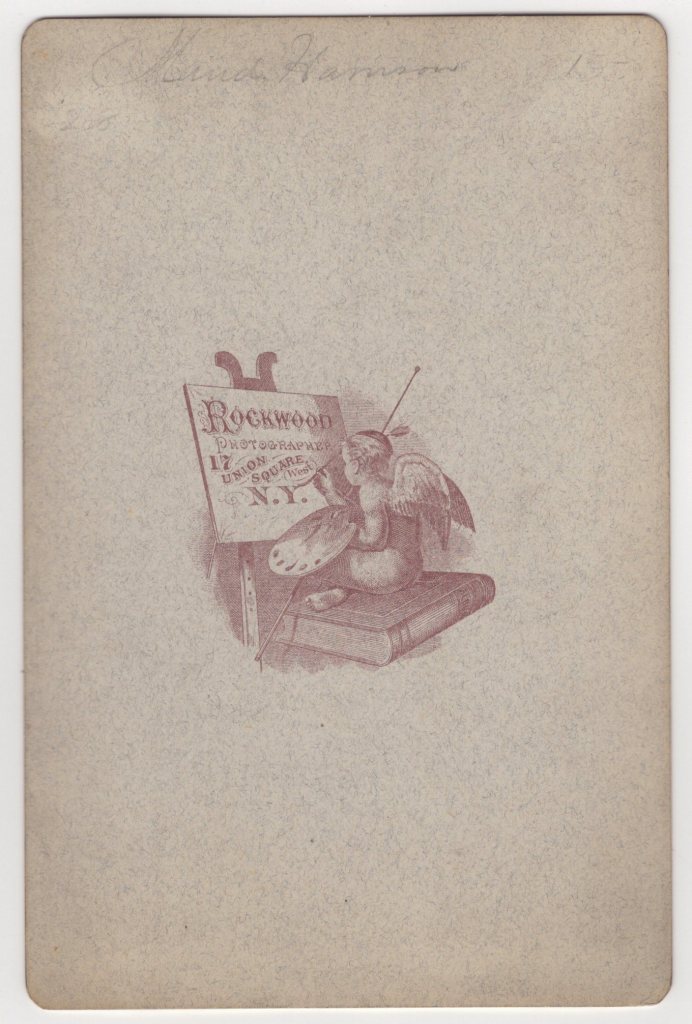




















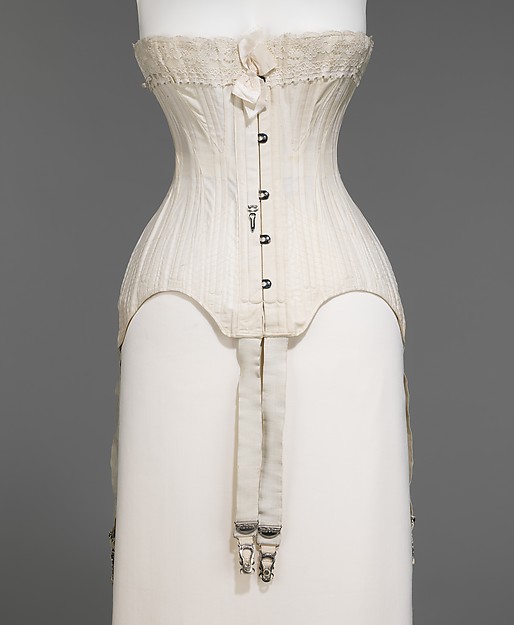




 The young woman in this cabinet card portrait is tall, thin, and wearing a dark dress. She is very well dressed. The woman is tightly corseted, which is typical for the era of this photograph. She is holding a folded fan. This photograph was taken in Florence, Massachusetts at a gallery operated by Ferdinand William Schadee (1840-1901). Schadee was born in Bavaria, Germany. I found no record of when he arrived in the United States. In 1869, he married Eliza A Schadee and the couple eventually had at least three children. Schadee was a Mason. A publication entitled “The History of Florence, Mass.” (1895) reveals that Schadee established his gallery there in 1885. Prior to that time, he ran a studio in Northampton, Mass. That studio was operated under the name of “Hardie & Schadee”. The 1880 US Census lists Schadee as a photographer as does a number of editions of the Northampton and Easthampton directory. He was listed in the directory up to 1901, indicating that he was working as a photographer until his passing. (SOLD)
The young woman in this cabinet card portrait is tall, thin, and wearing a dark dress. She is very well dressed. The woman is tightly corseted, which is typical for the era of this photograph. She is holding a folded fan. This photograph was taken in Florence, Massachusetts at a gallery operated by Ferdinand William Schadee (1840-1901). Schadee was born in Bavaria, Germany. I found no record of when he arrived in the United States. In 1869, he married Eliza A Schadee and the couple eventually had at least three children. Schadee was a Mason. A publication entitled “The History of Florence, Mass.” (1895) reveals that Schadee established his gallery there in 1885. Prior to that time, he ran a studio in Northampton, Mass. That studio was operated under the name of “Hardie & Schadee”. The 1880 US Census lists Schadee as a photographer as does a number of editions of the Northampton and Easthampton directory. He was listed in the directory up to 1901, indicating that he was working as a photographer until his passing. (SOLD)
 Photo 1
Photo 1 PHOTO 2
PHOTO 2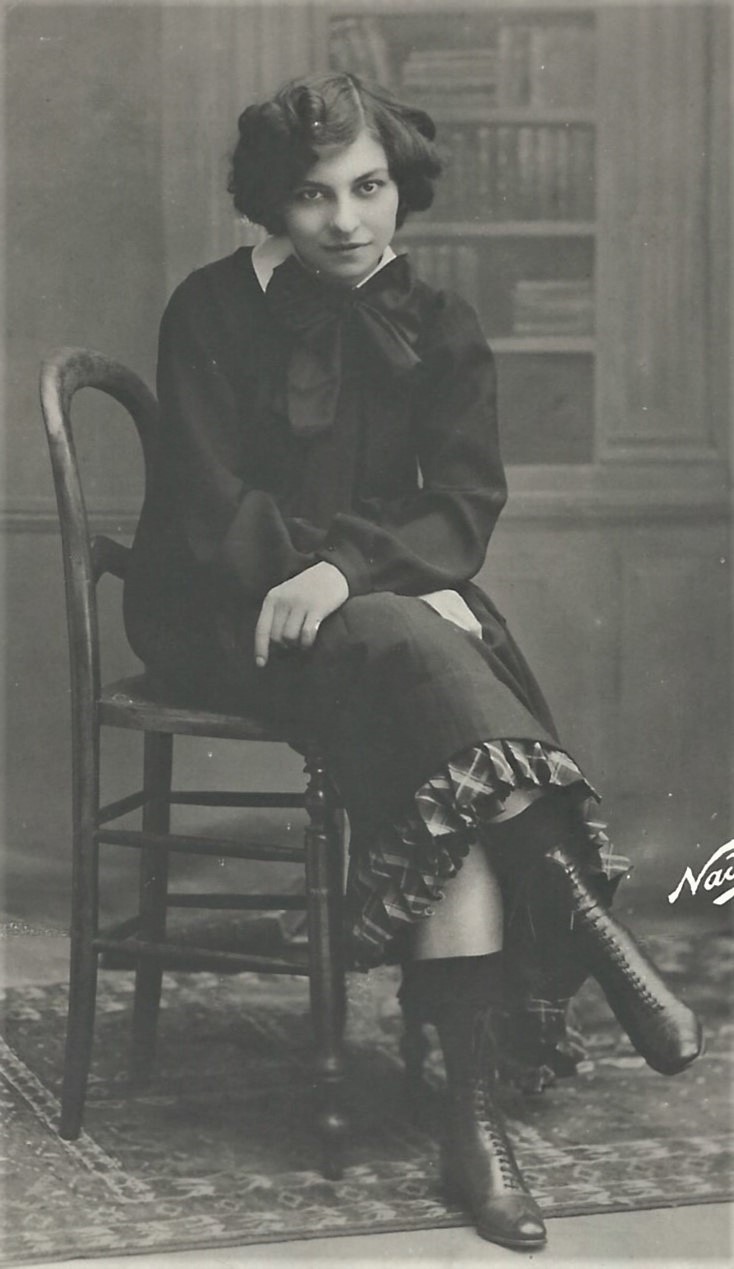 PHOTO 2 (CLOSE-UP)
PHOTO 2 (CLOSE-UP)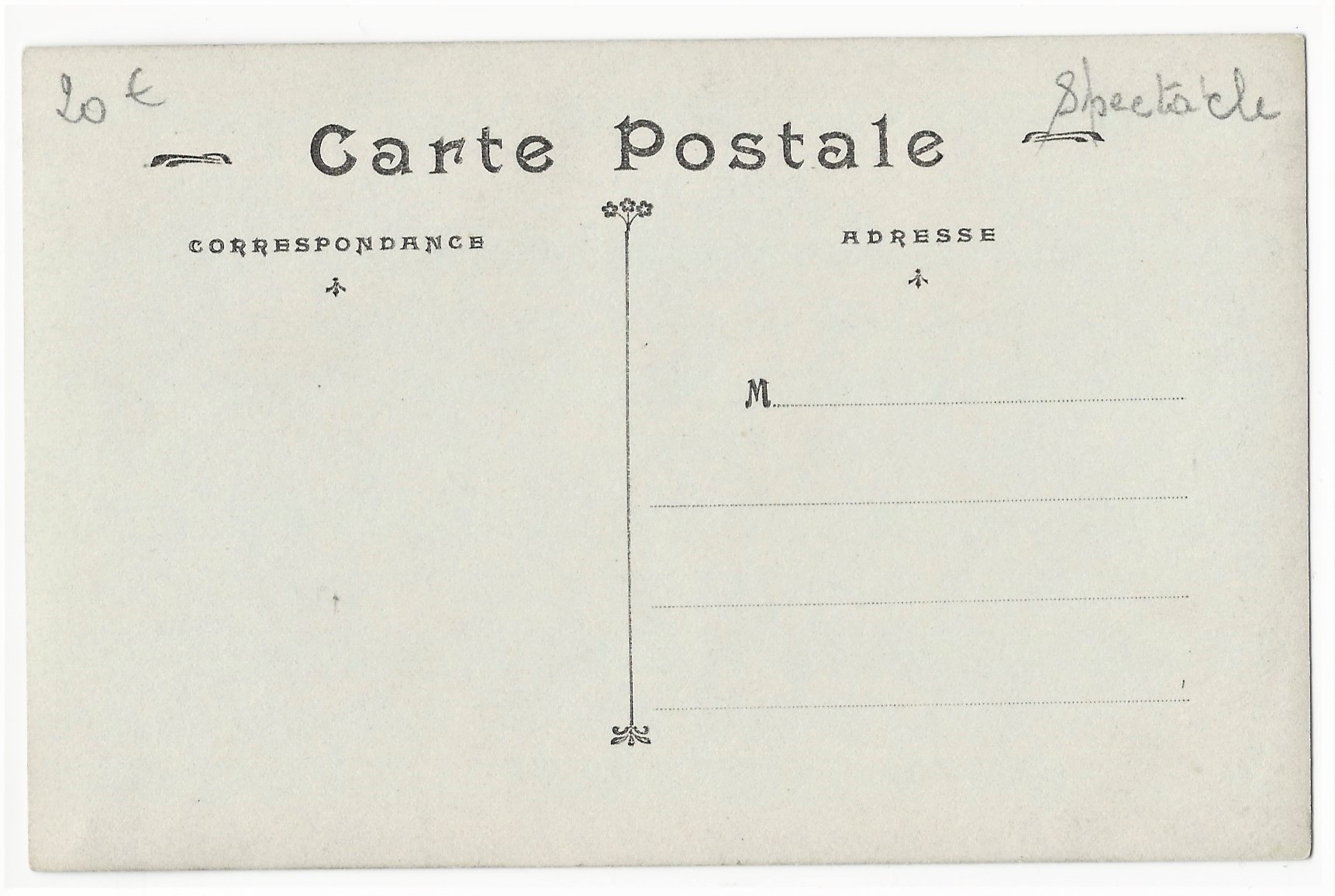 PHOTO 2
PHOTO 2
 An attractive young woman appears in this post cabinet card era photograph. She seems to be holding back a smile. Note her corset assisted thin waist. The subject of this photograph is unidentified as is the photographer and the location of the studio. This photo measures about 3″ x 4 3/8″. (SOLD)
An attractive young woman appears in this post cabinet card era photograph. She seems to be holding back a smile. Note her corset assisted thin waist. The subject of this photograph is unidentified as is the photographer and the location of the studio. This photo measures about 3″ x 4 3/8″. (SOLD)